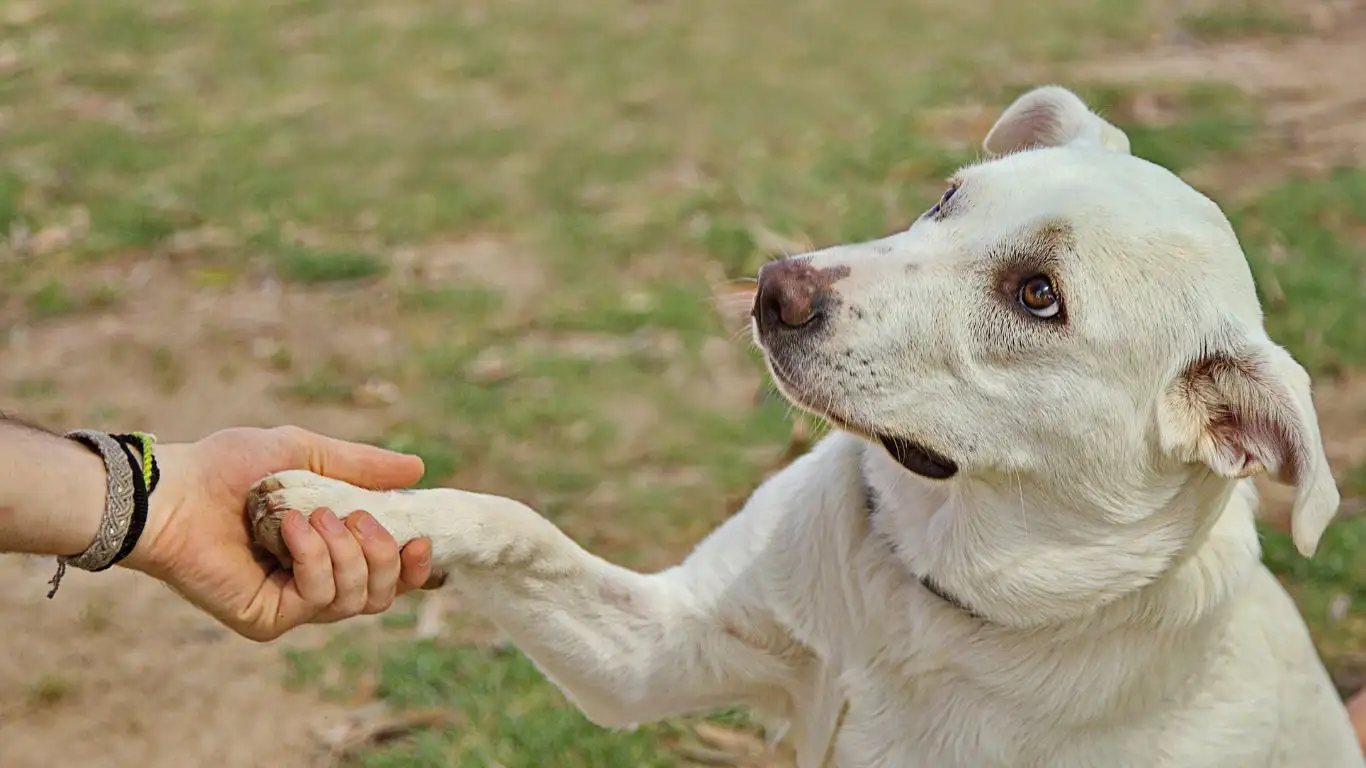Master How to Train a Dog to Respect Bedtime Boundaries (No More Sleepless Nights)
If you’ve ever found yourself tiptoeing around the house after bedtime because your dog just won’t settle down, you’re definitely not alone. One of the most common questions I get as a Canine-Assisted Therapy Trainer is how to train a dog to respect bedtime boundaries. And honestly, this is a big one—not just for your sleep, but for your pup’s well-being too. Dogs thrive on structure and routine, and setting clear expectations around bedtime helps them feel secure and calm. It also gives us humans the breathing room we need after a long day. Let’s dive into how you can teach your furry friend that lights out actually means lights out.
Why Bedtime Boundaries Matter for Dogs

Before we talk strategy, let’s talk *why*. Dogs are incredibly intuitive creatures, but they also look to us to understand what’s expected. When they don’t have clear cues—especially at night—they can get confused or anxious. That’s when you get the pacing, the barking at nothing, the sad eyes staring at your bedroom door.
Setting consistent bedtime boundaries helps reinforce your role as the calm, confident leader of the pack. From a therapy training perspective, I’ve seen time and again how bedtime structure can reduce stress in high-anxiety dogs and create a peaceful atmosphere for the whole household. It’s not about being strict—it’s about giving them what they crave: stability and predictability.
Start with Routine: Dogs Are Creatures of Habit

When I was working with a rescue named Ollie—a border collie mix who had never lived in a home before—the game changer was a bedtime routine. He was all over the place at first: whining at 2 a.m., hopping up on the bed uninvited, chewing on socks at midnight. But once we nailed down a solid nighttime ritual, it was like flipping a switch.
Here’s a simple routine to try:
- Same time each night: Pick a consistent bedtime. Dogs will internalize this like clockwork if you stick with it.
- Wind-down activity: A short walk or potty break, followed by some light play or a calming massage. Avoid high-energy games right before bed.
- Bedtime cue: Use the same word or phrase like “Time for bed” or “Night-night.” Keep your tone calm and reassuring.
- Reward the calm: If your dog settles in their space quietly, reinforce that behavior with a treat or soft praise.
Within two weeks, Ollie was curling up in his bed like a champ. No more pacing, no more sad-dog eyes. Just peaceful ZZZs for everyone.
Create a Sleep-Friendly Environment

Dogs need a dedicated space that signals “sleep zone.” This doesn’t mean they have to sleep in a crate (unless that works for them!), but the area should be calm, comfy, and away from household distractions. I always tell clients to think of it like setting up a little spa nook—soft bedding, minimal noise, and their favorite comfort item.
What helps a dog sleep better at night:
- A familiar scent: Place a t-shirt with your scent near their bed for extra comfort.
- White noise: A low fan or sound machine can help drown out random noises that might trigger barking or anxiety.
- Comfortable bedding: Not too hot, not too cold. Orthopedic beds work wonders for older dogs, especially.
- Nightlight: Some dogs are less anxious with a soft light nearby, especially if they’re prone to nighttime wandering.
From my experience, even hyper dogs respond well when they have their own space that’s respected and reinforced consistently. The key? Don’t give in when they test boundaries—and trust me, they *will* test them at first!
Handling Pushback: When Your Dog Tests the Limits

So, you’ve got your bedtime routine going, your dog has their cozy space, and things are *mostly* smooth. But then—bam. One night, your pup decides the rules don’t apply. Maybe they bark outside your bedroom door, maybe they whine or scratch, or maybe they just stare you down like they’re trying to Jedi-mind-trick their way onto the bed.
This is totally normal. In fact, it’s practically guaranteed. Dogs—especially smart, stubborn breeds—will test the waters to see if the bedtime rules really stick. That’s why consistency is your best friend here. I’ve had so many clients give in “just this once,” and unfortunately, that sends mixed signals. To your dog, it means bedtime boundaries are flexible.
Here’s how to respond:
- Ignore attention-seeking: If your dog barks or whines for attention, don’t engage. Don’t talk, don’t scold, don’t open the door. Silence is powerful.
- Wait for quiet: Once they stop making a fuss—even for a few seconds—then you can reward or check in if needed.
- Use calming tools: Pheromone diffusers, anxiety wraps, or soft chews can help dogs that get particularly anxious at night.
- Don’t feel guilty: This is key! You’re not being mean. You’re teaching them to be independent and confident during downtime.
I had one German Shepherd, Layla, who was relentless at first. The first few nights, she paced outside her owner’s bedroom like she was on night watch. But her humans stayed consistent, and within a week, she got the memo. Now she’s snoozing peacefully in her bed by 10 p.m. sharp, like clockwork.
Positive Reinforcement: Your Secret Weapon

Let me say this loud and clear: reward the good stuff. When your dog respects bedtime boundaries—even for a few minutes—acknowledge it. That doesn’t mean giving them a treat every single night forever, but during the learning phase? Absolutely.
Some reward ideas include:
- A high-value treat: Something special they only get during bedtime training. Think freeze-dried liver or peanut butter chews.
- Verbal praise: Calm, soothing tones like “Good night, buddy” or “Nice job settling down.” Dogs pick up on your vibe.
- Gentle petting: A short cuddle session once they’re calm in their space, reinforcing that it’s a safe, good place to be.
I used this method with a therapy dog-in-training named Mabel. She was a spunky Labrador who had no interest in winding down at night. But once we paired her bedtime with a special cheese treat, she became a pro at settling on cue. Positive reinforcement helped her connect the dots without stress or conflict.
Common Mistakes to Avoid When Training Bedtime Boundaries

Even well-meaning dog parents can sabotage their own bedtime training without realizing it. Here are some common missteps I’ve seen in sessions—and yes, I’ve made a few of these myself early in my career!
Watch out for these:
- Being inconsistent: If one night you let your pup sleep in the bed and the next you don’t, it’s confusing. Dogs need clear, predictable rules.
- Using the crate as punishment: Never send them to their crate in frustration. It should be their cozy den, not a “time out” zone.
- Too much stimulation before bed: Tug-of-war or roughhousing right before sleep makes it harder for them to wind down.
- Reinforcing the wrong behavior: If your dog whines and you give them attention, they learn that whining = reward.
Instead, focus on shaping calm, relaxed behaviors and reinforcing them like gold. Over time, your dog will begin to understand what’s expected—and they’ll actually feel more relaxed knowing the nightly routine is consistent and reliable.
Training your dog to respect bedtime boundaries doesn’t happen overnight (pun fully intended), but with patience and a game plan, it absolutely can be done. And trust me—when your pup finally settles into their bed without protest, it feels like a little miracle. More importantly, it makes for a healthier relationship where both you and your dog feel rested, understood, and secure.
Maintaining Progress and Long-Term Success

By now, you’ve set up a solid routine, handled pushback, and reinforced calm behaviors. But training is never truly “done.” Just like us, dogs can have off nights—stress, excitement, or even a funky dream can send them roaming at 3 a.m. The goal here is maintenance. Think of it like brushing your teeth: a quick nightly ritual to keep everything in check.
Daily Check-Ins
- Revisit cues: Once a week, briefly run through your bedtime sequence without full treats—just praise. This keeps the association strong.
- Observe behavior shifts: Life changes (new pet, baby, renovation noises) can disrupt sleep. Pay attention and adjust the routine as needed.
- Mix up rewards: Rotate your high-value treats or comfort items so that bedtime remains exciting, not predictable.
One of my therapy training clients, a spirited Husky named Zeus, started having restless nights whenever fireworks went off in the neighborhood. We tweaked his routine by adding a short “desensitization walk” during fireworks season—just a slow stroll past the sounds, paired with calming chews. Problem solved!
How to Train a Dog to Respect Bedtime Boundaries: Advanced Tips

Ready to level up? These advanced techniques are perfect for experienced handlers or dogs that need an extra nudge.
1. Mat Training Extension
Use a large training mat or blanket in your bedroom doorway. Teach your dog to lie calmly on it until released. This creates a physical barrier without harsh confinement.
- Introduce the mat: Toss treats on the mat and praise your dog when they step on it.
- Add a cue: Once on the mat consistently, say “Place” or “Bedtime boundary.”
- Increase duration: Gradually ask for longer stays, rewarding intermittently.
- Incorporate bedtime: Make the mat the first step of your routine—then guide them to their actual bed.
2. Scheduled Night Checks
If you’re worried about unsettling your dog, set a silent alarm for a quick check-in. Stand by the door for a minute—no talking, no interaction—just calmly observe. If your dog remains relaxed, retreat quietly. This reassures them that you’re attentive without reinforcing night-time drama.
3. Enrichment During the Day
Quality daytime activity equals better sleep at night. Puzzle toys, scent games, and obedience sessions can tire both mind and body. A fulfilled dog is far less likely to stir after lights-off.
Conclusion: Sweet Dreams for You and Your Pup
Teaching how to train a dog to respect bedtime boundaries is more than a convenience—it’s a gift to your dog’s emotional health and your household harmony. With consistent routines, positive reinforcement, and occasional maintenance, those middle-of-the-night wake-up calls will become a distant memory. And remember, patience and compassion are your best allies. After all, we’re guiding them toward a calmer, more confident life.
References
Disclaimer
The information provided in this article is based on my experience as a Canine-Assisted Therapy Trainer and is intended for educational purposes only. If your dog exhibits severe anxiety or behavioral issues, please consult a certified professional trainer or a veterinarian for personalized guidance.






